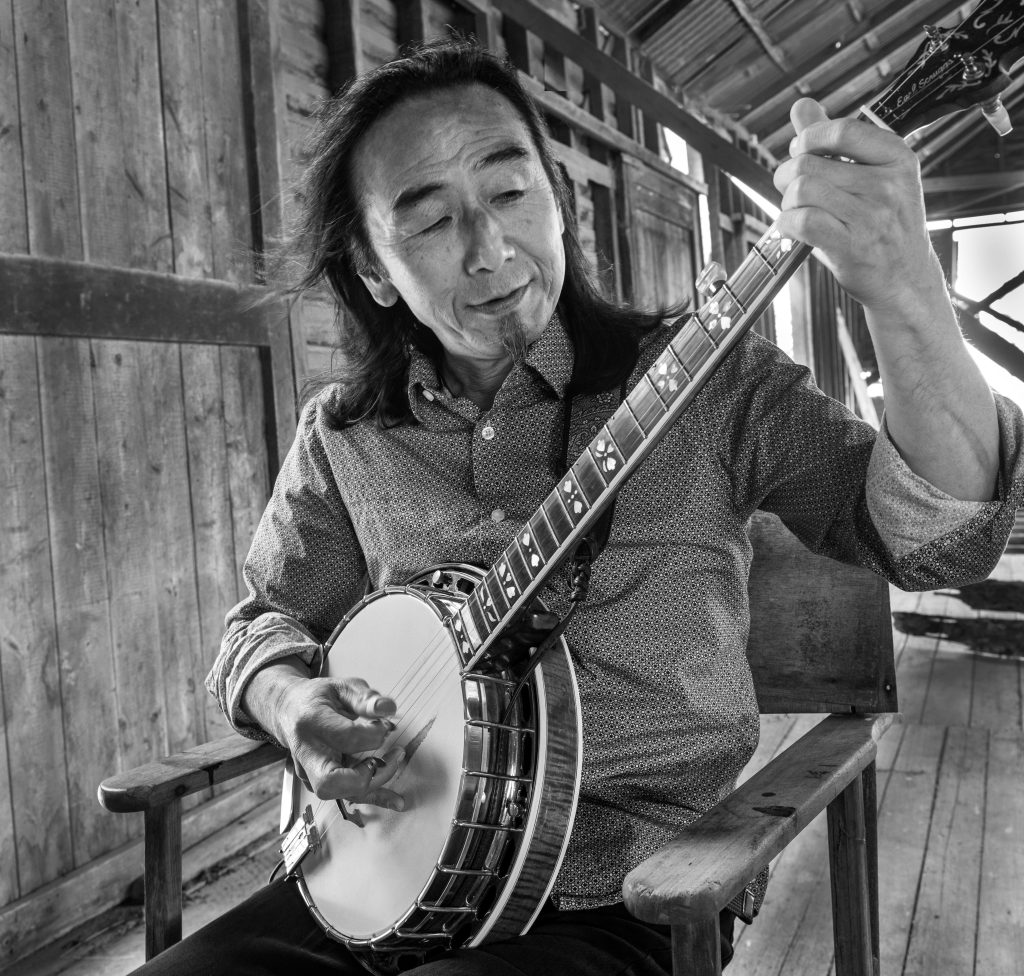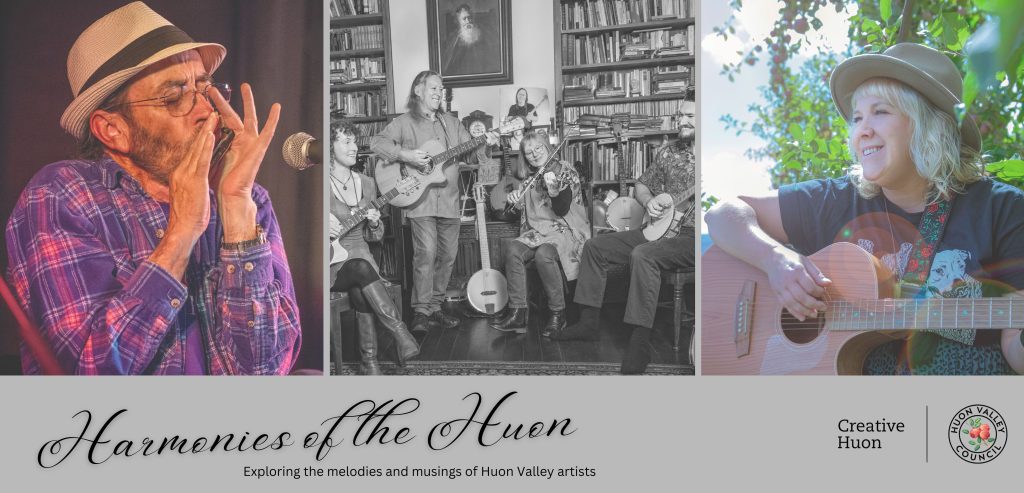Born in a small village in Japan, Montz Matsumoto started to learn bluegrass banjo from the age of 15.
‘When I was young I romanticised about American culture and that’s where the fascination for the banjo came from,’ Montz says.
He also explains that the banjo is similar to the shamisen, a Japanese three-stringed plucked instrument. It is constructed with a neck and strings stretched across a sound box to amplify the sound. Like the shamisen, the banjo has a skin head and a resonating base that act together like a speaker.
In 1987 Montz joined the legendary Japanese folk group, The Natasha Seven and in 1992 he travelled to Chennai in India to study the country’s classical music and traditional singing.
Montz came to Australia in 2002, and spent many years busking and performing at folk and bluegrass festivals in South Australia and other states. He visited Tasmania 12 years ago and fell in love with the climate and topography.
‘Compared to South Australia, which is so dry and hot, in Tassie I saw forests, water and hills, very similar to many landscapes in Japan,’ he says. ‘I also enjoyed the overcast and cloudy days and when I discovered that Cygnet had its own folk festival, I thought this must be a great place!’
Montz lives a modest self-sustaining life in a forest near Cradoc. His music is a mix of some original Japanese songs as well as Celtic and bluegrass styles.
‘I’m always exploring,’ he says. ‘Naturally my own culture comes out organically in my music, married with my experiences of living in the Huon. Reflections of my life journey and thoughts on how people enter and leave my life all feed my creativity.’
Montz is a regular performer at the Cygnet Folk Festival.
‘Harmonies of the Huon: Exploring the melodies and musings of Huon Valley artists‘ is a Creative Huon series in collaboration with Huon Valley Council and Huon Valley Tas, showcasing the Huon Valley’s musical talents, their inspiration and journeys.


